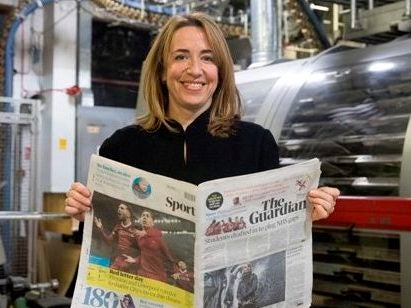
The publisher of the Guardian and Observer newspapers has cut its gender pay gap by 40 per cent in the past year.
Guardian News and Media reported a median pay gap – the difference between the middle salaries when put in order from smallest to largest for men and women – of 4.9 per cent (favouring men) on 5 April 2019.
This was down from 8.4 per cent last year and 12.1 per cent in 2017.
In its new gender pay report, published yesterday, GNM said the improvement reflected a “better representation of women in the top and middle of the organisation as we attract more women into the company”.
The publisher’s mean gender pay gap – found by adding up all the salaries and dividing them by the total number of staff – has increased marginally from 11.7 per cent to 11 per cent, which it put down to a number of senior female appointments.
In editorial, women were paid 5.9 per cent less on average (median) compared to a gap of 6.4 per cent last year.
Across other departments, such as marketing and distribution, women were paid 18.6 per cent less on average, down from 19.1 per cent in 2018.
Guardian editor-in-chief Katharine Viner (pictured) and chief executive David Pemsel said the figures showed “encouraging progress”.
“We are recruiting more women into the top of the organisation and supporting women to progress in their careers at GNM,” they said in a statement accompanying the report.
“While year-on-year we see some fluctuation in our results, the overall trends are determinedly in the right direction. We’re pleased that the range of company-wide measures we are taking appear to be setting us on the right path.”
The two main factors driving the Guardian’s gender pay gap are the disproportionate number of men in the top half of the organisation with not enough women in the most senior roles, and the higher number of women in lower-paid administrative, sales and marketing roles, the report said.
GNM is aiming to reach a 50:50 gender balance in the best-paid half of the company by 2022.
The top quarter of the company is currently made up of 37 per cent women and 63 per cent men, while the second best-paid quarter features 46 per cent women and 54 per cent men.
GNM’s overall workforce is now 48 per cent female, up slightly from 47 per cent in 2018 and 44 per cent in 2017.
The bottom quarter of the company, which is 63 per cent female, could benefit as GNM’s minimum salary was increased to £27,000 in October last year.
The Guardian has also launched a programme to help women in mid-level roles to progress to the next stage in their career, begun a new mentoring scheme, and introduced new recruitment practices such as gender balanced interview panels and shortlists.
The company also said it is actively trying to “attract, develop and retain” people from diverse backgrounds and will publish an ethnicity pay gap report this year.
GNM reported a median gender bonus gap of 2.8 per cent and a mean bonus gap of 27.5 per cent, which it said mostly related to sales commission payments for its commercial teams, in which the majority of senior employees are men.
See the full list of gender pay gaps in the UK media for 2018.
The UK media gender pay gap in 2018 was 17.9 per cent favouring men, or 8.6 per cent among full-time employees, according to the Office for National Statistics.
The Economist Group was the UK media company with the highest median gender pay gap for the second year running, with women on average paid 29.2 per cent less per hour than men.
The BBC announced yesterday its median gender pay gap has fallen for the second year running to 6.7 per cent, down from 9.3 per cent in 2017 when it was first revealed.
Picture: Guardian
Email pged@pressgazette.co.uk to point out mistakes, provide story tips or send in a letter for publication on our "Letters Page" blog
